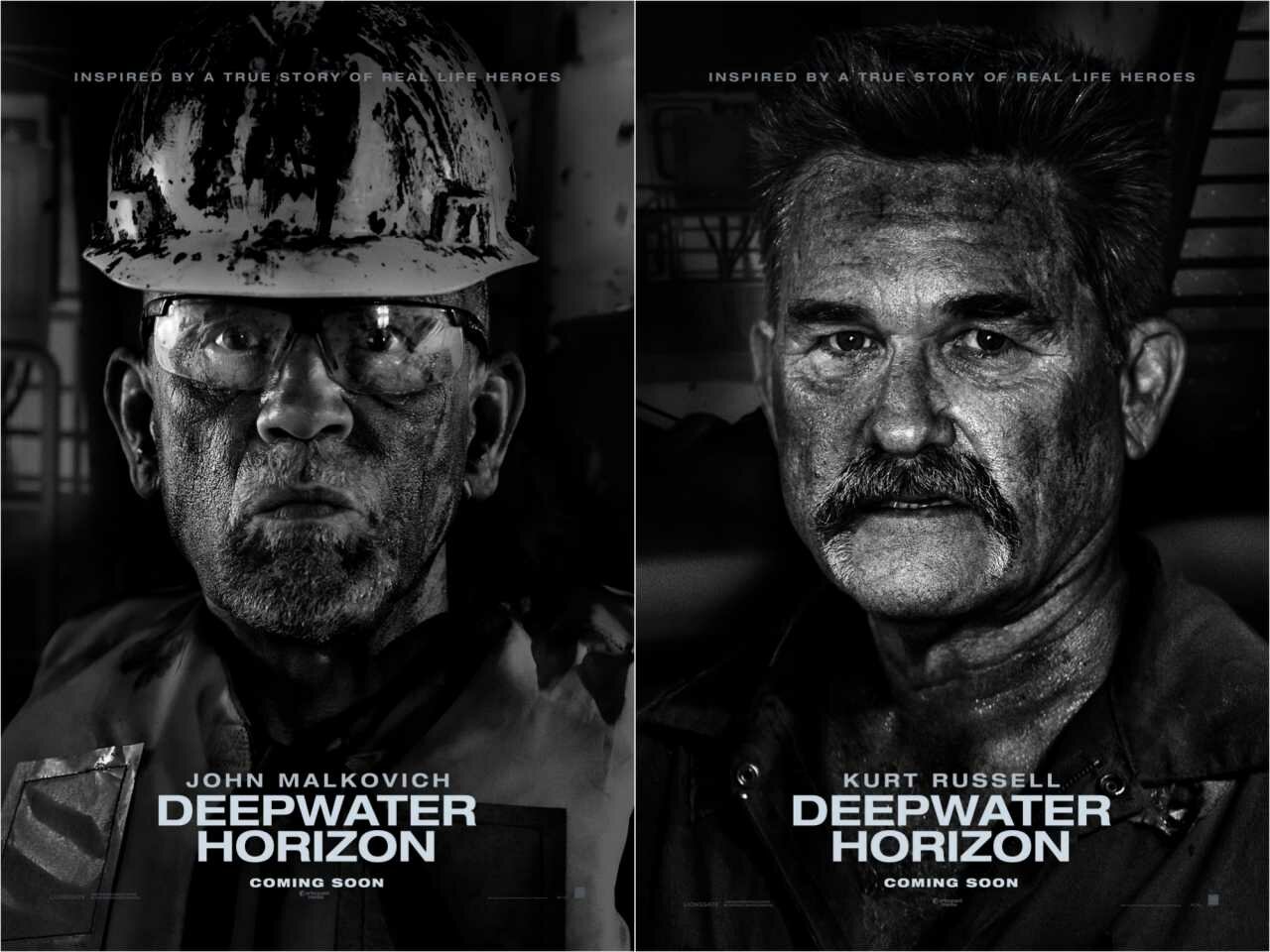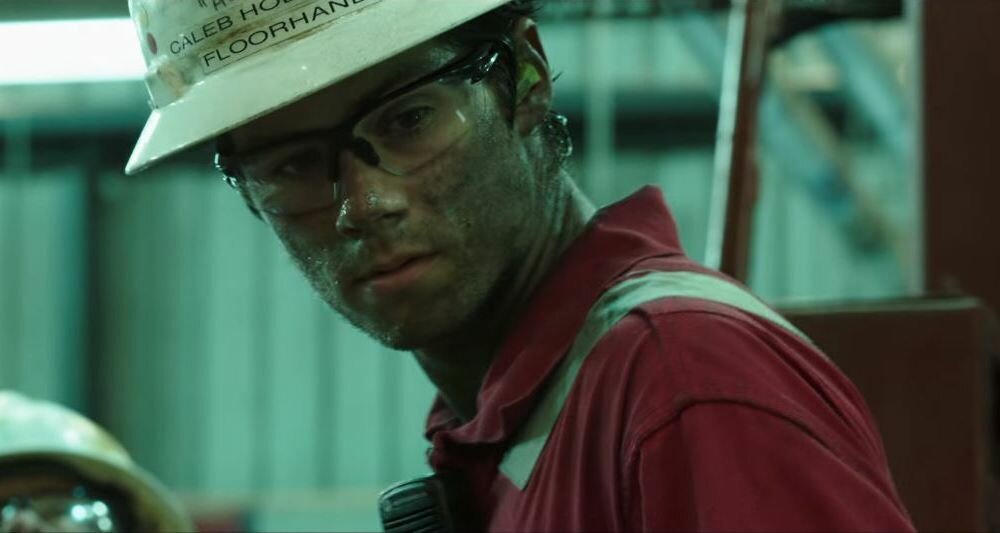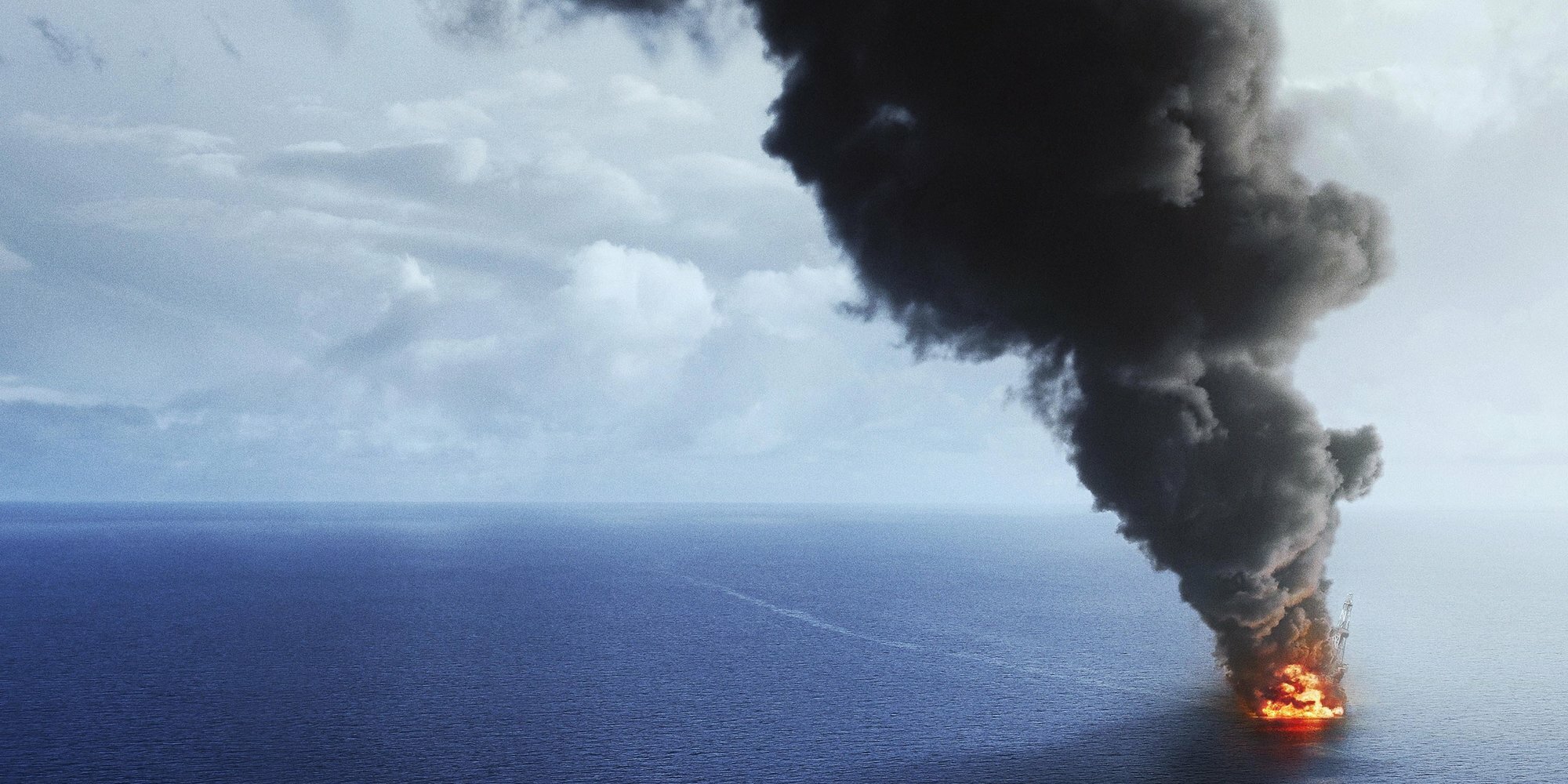An Intimate Disaster
By: Anthony Zangrillo
Director Peter Berg (Lone Survivor) reunites with star Mark Whalberg to tell the gripping personal story within the national BP Oil crisis of 2010. In a surprising move, Whalberg carries the film on a working man, hero level, even if some of the narrative is too hard to believe. Despite the audience knowing about the historical tragedy, the film attains a tense tone that will have audience members constantly on the edge of their seats. While the film features a disaster spectacle, which dominates the latter portion of the tale, the film’s early efforts to ground the blue collar workers will keep the stakes in the film constantly in perspective.
On April 20th, 2010, one of the world’s largest man-made disasters occurred on the Deepwater Horizon in the Gulf of Mexico. This intimate, yet expansive film honors the brave men and women whose heroism would save many on board, and change everyone’s lives forever. Berg wisely unwraps this movie with care. The introduction showcases Mike William’s (Mark Whalberg) family, his adoring wife Felicia Williams (Kate Hudson and her “magnificent eyes”), and his proud daughter. By having Mike’s daughter make a show-and-tell demonstration of his job, using a coke can, the film foreshadows the impending doom aboard the Deepwater Horizon. The demonstration is reduced to a kitchen mess due to an unpredictable burst of soda, raging through the honey plug. While in its current state, this scene is merely a joke, it will become a dangerous reality by the end of the film. Whalberg really excels in the final minutes of his screen time by managing to turn a clichéd emotional trick into a powerful, stunting reality.
Whalberg is accompanied by veteran actors Kurt Russell and John Malkovich. While Malkovich is slightly wasted as the corporate villain Donald Vidrine, Russell shines as crew leader Jimmy Harrell. Russell really demonstrates how clearly Harrell feels like the job is destined to end in a disaster. Harrell is easily predicting the impending doom, yet business and corporate management is forcing him to cave under the pressure of a fiscal blow-out. The dynamic between Vidrine and Harrell showcases the divide between the profit driven businessmen and the oil rig workers. Berg is not leaving the blame for the accident ambiguous. This tale places a lot of the responsibility on Vidrine (who had criminal charges dropped). By the climax of the film, Vidrine’s disheveled demeanor demonstrates the unexplainable shock Vidrine sinks to due to his own unending greed. On a side note, Russell is really having a renaissance in his recent choices of roles from Furious 7 to the upcoming Guardian of the Galaxy Vol. 2.
The cast of supporting characters also provides a realistic background for these unbelievable (yet true) events. All of the actors portraying the oil rig workers adopt accents and demeanors representative of blue collar, working class America. The subtle differences vastly enhance the realism of the scenes, while not overplaying the material into an embarrassing level of absurdity.
Finally, the main event of special effects is a superb spectacle of rage and tragedy. Berg adopts an unusual approach in consistently foreshadowing the oil’s eruptive approach. The omniscient audience is given multiple views of the ocean floor and the deep sea drilling. As the oil rushes through the pipes, the creaks and rushing oil imagery predict the ensuing outburst. When the outpour finally happens, it is a beautiful disaster to witness. The “payoff” is undoubtedly worth the wait, and the audience should sufficiently care about the developed cast of characters. However, some of the chaotic camera shots may take audiences out of the spectacle, even if that may have been the goal of the technique.
Ultimately, Deepwater Horizon will likely surprise many viewers with an intimate disaster that doesn’t shy away from corporate responsibilities, even if some of the “heroics” have been dramatized to the level of unreality.
Score: 8/10








